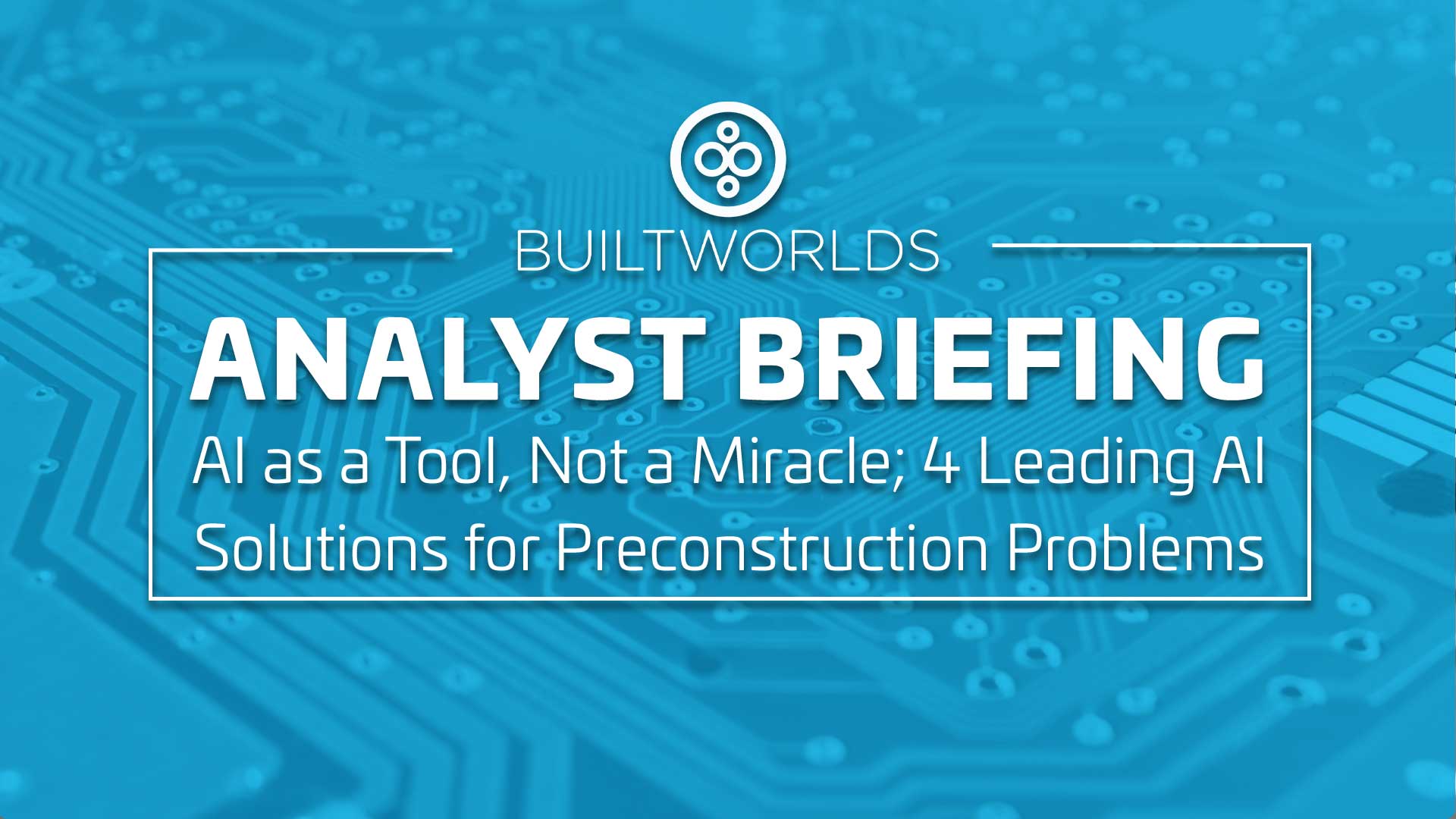
In light of the recent publicity around advancements in artificial intelligence, such as OpenAI’s ChatGPT, it feels important to start by saying this article was written by a human (not that that necessarily means the article will be better for it). Considering the circumstances and present technological advancements, making that distinction today as opposed to even a year or two ago is not nearly as crazy as one might think. As OpenAI’s solution continues to evolve, it has surprised many through its recent feats, including passing a Wharton MBA exam, parts of the Multistate Bar Exam, and the US medical licensing exam. Recent articles have come out stating that Amazon software engineers have started to use it for work, Buzzfeed announced it would use it to create more complex quizzes, and more. With all of these rapid advancements happening around the world, how is AI advancing in the construction industry?
AI in ConTech
The application of AI to the construction industry is, by relative standards, still very, very new. While early (most basic) robots were introduced in the 1970’s, then ERP systems grew into popularity in the 90’s, and email communications became more commonplace in the 2000’s, AI solutions have only come to the market in the last six to seven years. With the confluence at that time of this new type of technology poking its head into the industry, combined with scorching low interest rates beginning in 2009, VC funding exploded into AI solutions that had the potential to shatter the industry as we know it. In recent years, taking into account severe macroeconomic headwinds in recent years, AI solutions continue to see a steady stream of funding from the growing number of VC's in the industry. Below is an illustration of investments specifically to AI solutions in the built world in recent quarters.

What we have come to learn over the last decade or so is not that AI (at least as we currently know it) is going to flip the industry on its head, but rather that certain AI solutions, applied to specific problems and needs, can be valuable tools in a contractor’s tool belt. On a recent analyst call on the subject of Preconstruction, Stewart Carroll, President of Beck Technologies, joined by Clifton Harness, CEO & Founder of TestFit, both mused and agreed that the automation of low-value tasks is where the true value of AI exists. This, in fact, was the thesis behind TestFit, which began due to Clifton’s frustration with infinite iterations of parking lot space capacities. Thus was born an AI solution, which performs days-long tasks in a matter of seconds.
As AI has grown up over the last few years, the applications have increasingly grown and segmented, per Stewart and Clifton’s thoughts above. Now, as contractor’s are increasingly wary of the next cool, bleeding edge solution, technology and innovation managers seek to solve bite-sized, value-add problems that they have identified through planning and work with project teams. Buyers nowadays are not looking for ways to implement AI, but rather looking to solve specific problems potentially with solutions that utilize AI in some capacity.
4 AI Solutions in Preconstruction
Contractors have identified significant bottlenecks in the preconstruction phase of the project lifecycle. This phase is still rife with disjointed communication flows, analog efforts, and human error. In order to begin to combat some of these issues, contractors are beginning to increase their appetite for solutions that can assist with some of these issues, which plague every project. Increasingly, contractors are looking to solutions to assist with bid management & estimating, along with the other areas listed below.

Through both our venture research and our benchmarking research, BuiltWorlds has identified a wide variety of technology solutions both broadly in the construction industry, and more narrowly specific to preconstruction technology solutions. Below are examples of four technology solutions that utilize AI for very specific purposes, seeking to solve tangible problems that exist in the industry today.
- Mercator.AI: A bid management platform that uses AI to sift through massive data sets to identify and qualify potential project opportunities based on a series of inputs.
- Mercator raised a pre-seed round of $1M of VC and private funding in Q2 of 2022
- nPlan: A schedule forecasting solution that uses AI to predict potential disruptions to project schedules based on historical data sets.
- nPlan raised an $18.5M series A from Google in Q1 2021.
- Firmus: A project modeling and simulation solution that uses AI to identify missing or potentially inaccurate design information that could potentially lead to cost or schedule overruns.
- Firmus raised a $4.5M seed round from VC funding in Q2 of 2022.
- Togal.AI: An estimating solution that utilizes an AI/ML platform to analyze blueprints with over 97% accuracy.
- Togal received a strategic injection of $420k in Q2 of 2022
Want to learn more about preconstruction technologies?
For more information on preconstruction technology, check out the 2022 preconstruction report and associated tech specialty reports, and get involved by taking the updated 2023 preconstruction benchmarking survey.



Discussion
Be the first to leave a comment.
You must be a member of the BuiltWorlds community to join the discussion.